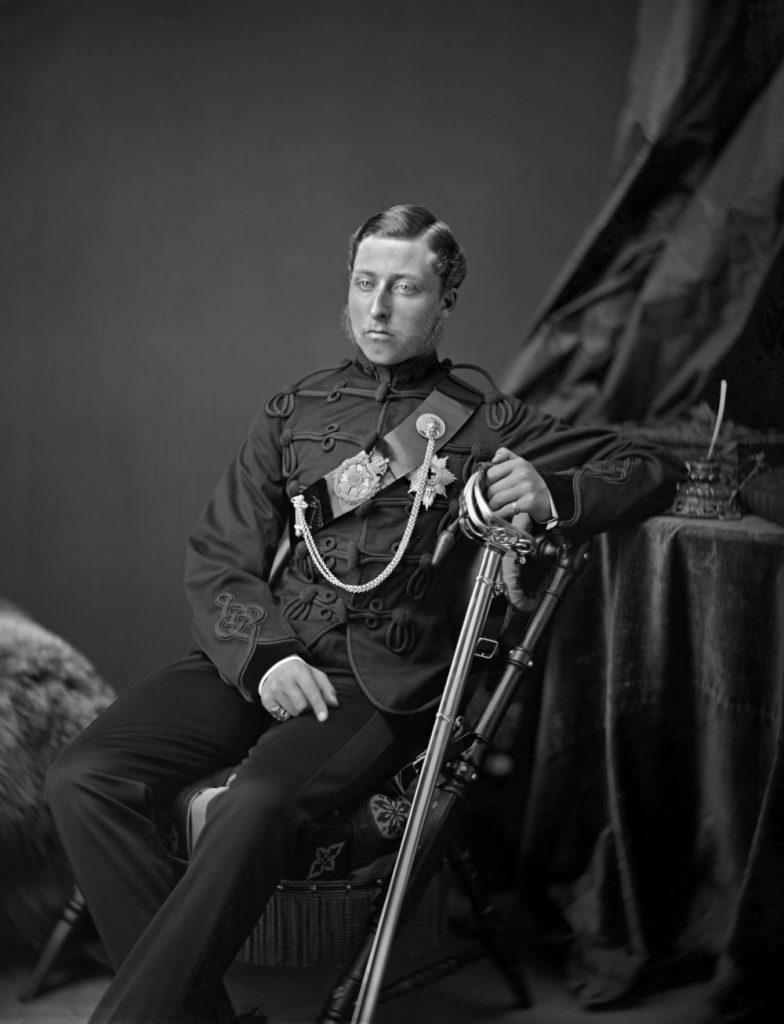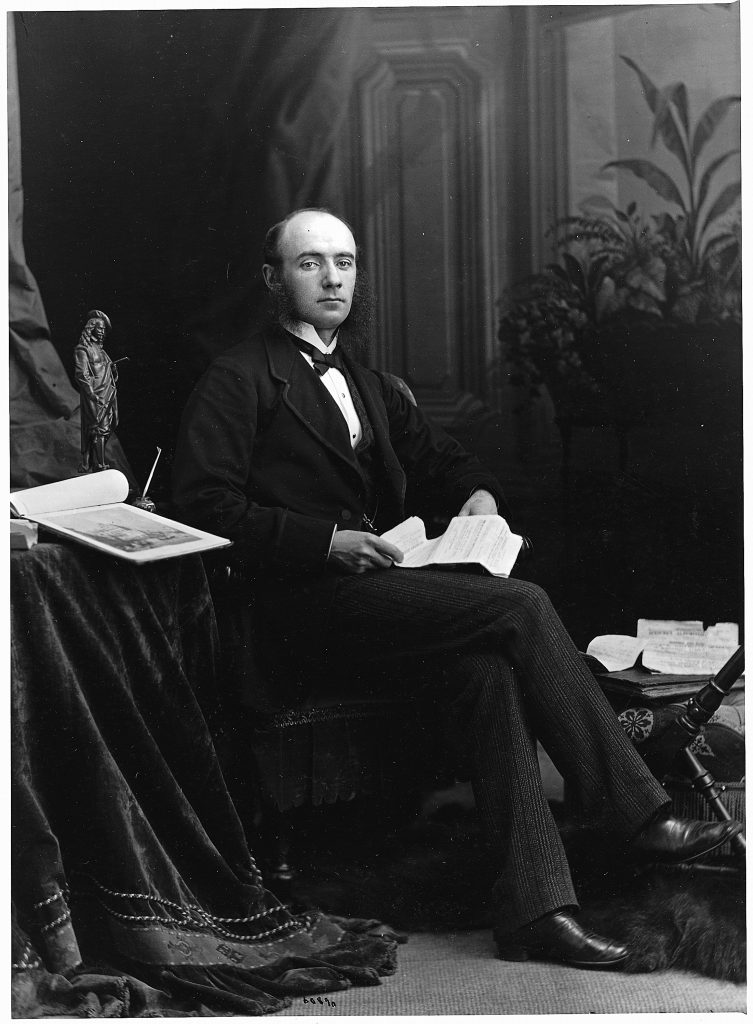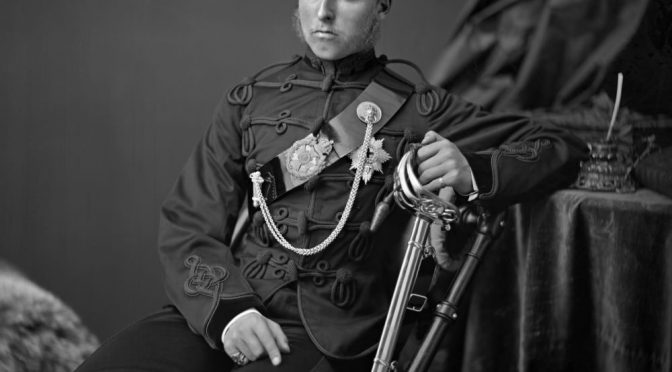You’re probably wondering why a photograph of a minor member of the Victorian British royal family features here. Prince Arthur was captured using by then well established photography techniques. Nor was Arthur a photographic innovator. But it is what the image was then used for. A revolution in print & news coverage.
Prince Arthur was the seventh child of Queen Victoria and her 3rd Son. He’s notable for 3 points. He was the longest lived of Victoria’s 4 sons dying in 1942 and lived during the reigns of 5 of his relatives. It is likely he also knew the future Queen Elizabeth the II. The second claim to fame is he was the only member of the Royalty to be Governor General of Canada.
But it’s what happened to his image captured via the wet collodion process by William Notman in 1869 that perhaps goes down more in history (unless you’re Canadian). This image was the first published photograph in a news periodical.
And that all hinged on Gelatine.
The image

By 1869 the Wet Collodion process largely replaced Daguerrotype. Whilst it’s not the point of today, it offered much faster exposure times and more importantly produced glass plate negatives allowing for easy reproduction of prints. And Notman was well versed in using it by 1869
Notman was born in Paisley in Scotland but had emigrated to Montreal in 1856. He set a photography Business and in 1858 was the official photog documenting the construction of the Victoria Bridge in spanning the St Lawrence. He would meet Albert’s brother Prince Edward (later Edward the VII) at the opening of the bridge in 1860 and present him with a set of photos for his Mother, Queen Victoria. She was so impressed that she named him photographer to the queen although she did seem to hand that title out quite a bit.
Notman shot several studio images of Prince Arthur as you can see on the page for this image on the McCord Stewart museum website. The museum holds the original glass negative which is shown digitally inverted here.
But this image was selected for one special purpose. It grace the cover of the first edition of the Canadian Illustrated news a weekly news paper and became the first news print photograph

Printed in the Press
Today we take photographic images in our press for granted whether in print or online. And photography in newspapers has been taken for granted since the late 1800’s.

But before this image there had been no photographs published in any newspaper or periodical. Although illustrated newspapers were popular they relied on printed drawings
Although crude by later standards this was the dawn of a new printing method although it would be over decade before you started to get Photographs in Daily newspapers.
But hang on isn’t that photo of the Les Mis Barricades the first press photo ?
You are on to something.

It’s this image captured during the June day Uprising of 1848. Technically Victor Hugo’s masterpiece focuses on the earlier 1832 revolt. But given Paris was pretty much the winner or runner up of most Barricaded City in the world for much of the late 1700’s through into the 1800’s, it’s an easy mistake.
The image is one of two Daguerreotype images captured by Charles François Thibault on the morning of 25th June 1848 on the Rue du Faubourg-du-Temple (it’s sometimes labelled as the Barricades Rue Saint-Maur which is the bisecting street). According to this post on Carnavalet museum’s website, Thibault shot this from No 92, where an apartment block still stands (now No 94). It’s not clear if the Butcher and Kebab shop were there back in in 1848 but you can still see some building details today on streetview
Thibault was also there to witness the aftermath of the June days Uprising being crushed Government forces. These are often seen as the first news photos ever published but in fact Thibault’s photos were converted manually to printing blocks for printing in the French weekly news periodical L’Illustration. They are in fairness arguably still the first photojournalism shots taken.
You can access those images thanks to google books today.
But Hang on you could already get Print Reproductions by then ?
Oh totally but there’s a catch. Daguerreotypes were effectively one shot images. By and large you could only make copies by taking another daguerreotype of the original print. Henry Talbot’s competing Calotype process did allow for negative creation from which prints could easily be made. But this wasn’t suitable for mass print.
The arrival of the Collodion process at the start of the 1860’s allowed for much easier chemical prints to be made and would lead to move to try and create more mechanicalized printing.
And this is where some interesting properties of Gelatine kick .
The Pigs Trotters to Prince in Print
Gelatine’s relationship to photography was well established by the time Prince Arthur posed. It was already being used as dry gelatine coated photographic plates which were replacing the wet collodion process in landscape work. Gelatine remains a key ingredient in today’s film emulsions and photography processes.
But by the mid 1860’s another property was being exploited
If you use photosensitive dichromatic salts when preparing a sheet of gelatine. The sensitised gelatine hardens when exposed to UV light. The depth of the hardening relates to the degree of exposure. So if you place your Gelatine sheet behind a glass negative and expose with UV light, you can dissolve the remaining soft gelatine in warm water leaving a relief image
And this technique would span several new ways of printing
Carbon Print
The most simple process related to this was Carbon printing. It’s still in use today. Early photographic papers had a tendency to fade over time. This picked up the interest of Sir Joseph Swan. He’s better known as one of the claimants linked to invention the electric lightbulb. But this Sunderland born lad had major contributions to photography. He would develop bromide photographic papers which are still used today. He is also linked to the use of celluloid as backing material.

But he also created Carbon Printing.
It uses that UV hardening photosensitised gelatine trick. The Gelatine however is pigmented by carbon black (commonly made from soot). So when the relief image is mounted onto a white backing sheet you get a tonal degree of grey matching traditional photographic images but one that doesn’t fade and of high quality.

However bit really is just an alternative way of making single prints. But the same gelatine trick can be exploited for multiple images
Woodburytype Process
Pretty much at the same time as Swan was coming up with the Carbon print, English photographer Walter Bentley Woodbury was inventing a similar but more printable technique. Woodbury was an early photographer original from Manchester whom is equally known for early photographs from Australia and what now is Indonesia.

His technique also exploited the properties of photosensitised Gelatine. But this time the relief image was pressed into soft lead thereby creating an intaglio metal printing plate. Most mechanical printing processes use relief printing. Relief printing is what you get with a typewriter or those potato stamps you made a s a kid. You apply the ink or another medium to the exposed surface of stap and use that make your print. But the reverse is true in intaglio printing. the ink or other medium is in the sunken areas and the paper is pressed down to get that print. In Woodburytype that “ink” is pigmented gelatine

That is then printed onto the backing material. Although you can’t combine it directly with printed text, it allows obviously for multiple copies to be printed all being slowly. These prints could be glued or added into existed printed books. The images produced were very high quality images and with a similar high tonal range to carbon printing. It was used for carte de vistes, fine art books and pasted in photographs in a range of books. But it would be partly doomed by the process that involved Prince Arthur going to press.
Leggotype Process & Half Tone

William Leggo was born in Quebec city. He would follow his father and become an engraver. He was successful in his work and would end up in partnership with Desbarats family, notable Quebec printers particularly with George-Édouard Desbarats.

William and George would patent Leggotype in 1865. Like Carbon Printing and Woodburytype, it too used sensitised Gelatine to create a relief image. But what they did was use that relief to create a plaster mould. That mould in turn was used to create a copper plate that could be used for intaglio letterpress printing (although the rest of the paper was printed in relief).
And halftone in Print ?
What our engraver and printer also used was Half tone. This concept was first described by by Henry Fox Talbot, the inventor of the Calotype photographic process and therefore the photographic negative. In half tone printing you can give the appearance of continual tones of shade by using dots of varying sizes (and sometimes spacing) when in reality all you do is print in pure B&W.
Here’s an extreme example. Look at this half tone example image when small

But let’s blow that up and you can see the size of the dots cause the shading

Leggotype was a first step. Although it would be US inventor Fredrick Ives who would really came up with a commercially successful way of printing half tones. He used metal plates coated in a light reactive coating known as photoresist. This reacts to light and then is developed leading to the less exposed parts to wash away. the remaining resist then protects the underlying plate which is then acid etched giving rise to relief printing plate. Using the half tone principle allowed Ives create tonal patterns from just effectively a pure B&W process
These plates could be added to standard printing arrangements.
Whilst Halftones produced less quality images than Woodburytype, they were good enough to largely replace it and remain a printing method still used today,
And Beyond…
But Leggo and Desbarats would more to contribute to the development of press photography. They both moved business to New York where they helped set up another illustrated periodical, The Daily Graphic. But unlike the Canadian Illustrated news, this as the name suggests a daily newspaper. In that itself it was no first but The Daily Graphic would the first daily newspaper to feature both a printed photo and later the first news photo in a daily.
First there was a half tone image of Steinway Hall in 1873

And then in 1880 the first daily news image was of a shantytown in New York. Although by then both Leggo and Desbarats had return to Canada it was still their techniques being used.

Within a few years photos in Newspapers were commonplace.


Image by Victor Console, Public domain, via Wikimedia Commons
Sources
All images are listed where can be found including physical items where appropriate. Additional sources below.
General
Thibault & The June Days Uprising
- Barricades In The Faub.g of The Temple – Musée Carnavalet website (French)
- The first photo of a barricade – Un Jour de Plus à Paris website (Eng/Fr)
- I’Illustration pg 276 1848 in Google books
Leggotype
- Leggotype Inventor, W.A Leggo,Susanna McLeod (2019) -Glimpses of Canada History website
- Addleman-Frankel, K. (2022). At the Cutting Edge of Halftone Printing: William Augustus Leggo and George Edward Desbarats. Scientia Canadensis, 44(1), 19–30. https://doi.org/10.7202/1098138ar
- Desbarats illustrated Canada, Susanna McLeod (2013) – The Kingston Whig Standard Website


Great article, nice to have a chronology of how we got to modern day film.